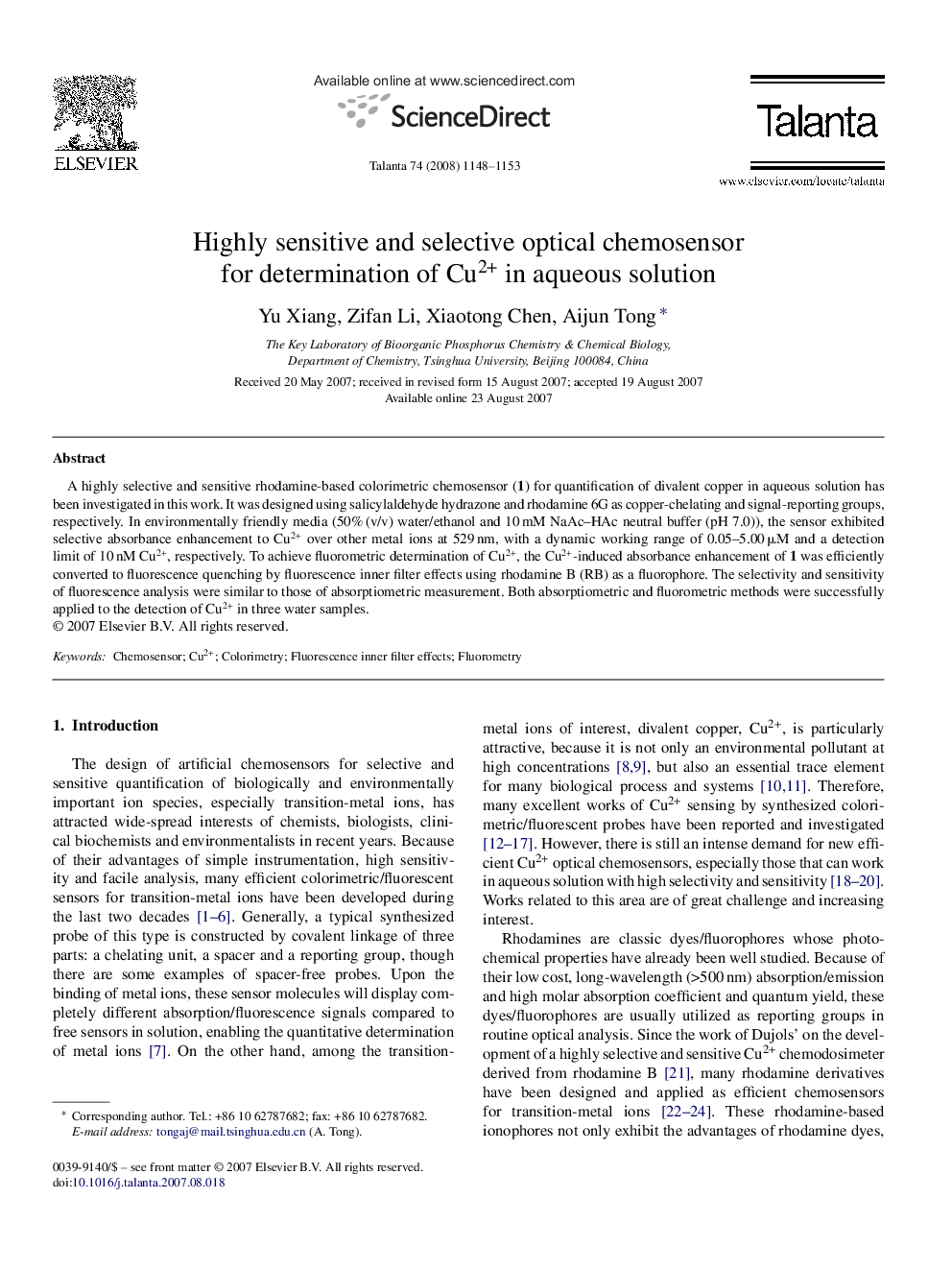| Article ID | Journal | Published Year | Pages | File Type |
|---|---|---|---|---|
| 1244500 | Talanta | 2008 | 6 Pages |
A highly selective and sensitive rhodamine-based colorimetric chemosensor (1) for quantification of divalent copper in aqueous solution has been investigated in this work. It was designed using salicylaldehyde hydrazone and rhodamine 6G as copper-chelating and signal-reporting groups, respectively. In environmentally friendly media (50% (v/v) water/ethanol and 10 mM NaAc–HAc neutral buffer (pH 7.0)), the sensor exhibited selective absorbance enhancement to Cu2+ over other metal ions at 529 nm, with a dynamic working range of 0.05–5.00 μM and a detection limit of 10 nM Cu2+, respectively. To achieve fluorometric determination of Cu2+, the Cu2+-induced absorbance enhancement of 1 was efficiently converted to fluorescence quenching by fluorescence inner filter effects using rhodamine B (RB) as a fluorophore. The selectivity and sensitivity of fluorescence analysis were similar to those of absorptiometric measurement. Both absorptiometric and fluorometric methods were successfully applied to the detection of Cu2+ in three water samples.
